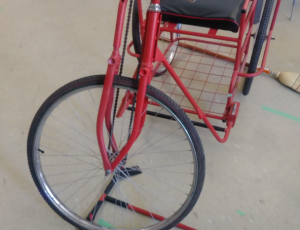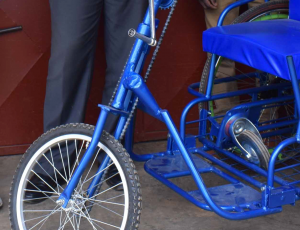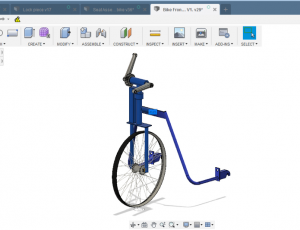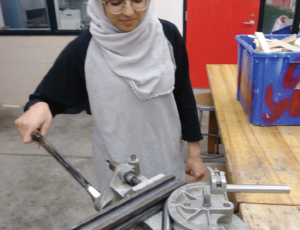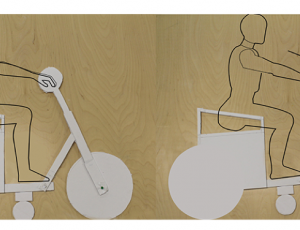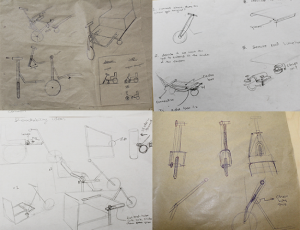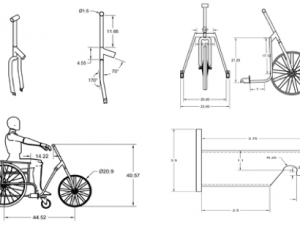Prototype 2 included efforts to incorporate some of the changes that the manufacturer had developed in Prototype 1, including the use of a smaller front wheel and the creation of a sturdier foot support. The Ottawa design team set out to make incremental changes to the prototype, including and building upon the changes the manufacturers at Katalemwa had created.
One of the goals for Prototype 2 was to create a Computer-Aided Design (CAD) model of the prototype, to test how well the improvements could be communicated across space. The thinking behind created a CAD model was that eventually it could be open source, accessible by anyone who wished to download the design to manufacture the device themselves, therefore reducing some barriers in the availability and accessibility of mobility devices.
Studying the changes that the manufacturer had made to the design was a crucial step in the development of Prototype 2. The smaller wheel the manufacturer used ensured the tricycle user could have much more control in steering, for instance, but the change meant that several different parts of the design had to be altered. The Carleton-based design team, including intern Maryam Mussa, rebuilt a model of the Ugandan-built prototype in Ottawa out of used bike parts so as to examine it in detail.
Ultimately, Prototype 2 evolved to have a smaller front wheel, which meant adjusting the front attachment piece of the tricycle, and reducing the number of forks from two to one.
As far as incremental improvements to the design of the two-in-one wheelchair-tricycle, one goal was to improve the ease with which the wheel could be changed out for the casters. While in Prototype 1, the casters inserted at two points, Prototype 2 simplified this, leaving only one connector mechanism with the intention of addressing use-ability.
To read more about Prototype 2, see this report by Maryam Mussa.

